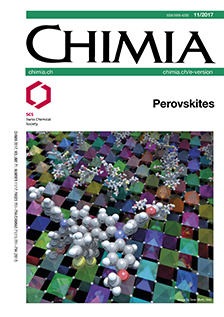Additives, Hole Transporting Materials and Spectroscopic Methods to Characterize the Properties of Perovskite Films
DOI:
https://doi.org/10.2533/chimia.2017.754Keywords:
Crystal engineering, Hole conductor, Perovskite solar cell, Solar cell efficiency, Photoluminescence spectroscopyAbstract
The achievement of high efficiency and high stability in perovskite solar cells (PSCs) requires optimal selection and evaluation of the various components. After a brief introduction to the perovskite materials and their historical evolution, the first part is devoted to the hole transporting material (HTM), between photoelectrode and dark counter electrode. The basic requirements for an efficient HTM are stated. Subsequently, the most used HTM, spiro-OMeTAD, is compared to alternative HTMs, both small-molecule size species and electronically conducting polymers. The second part is devoted to additives related to the performance of the perovskite light-absorbing material itself. These are related either to the modification of the composition of the material itself or to the optimization of the morphology during the perovskite preparation stage, and their effect is in the enhancement of the power conversion efficiency, the long-term stability, or the reproducibility of the properties of the PSCs. Finally, a number of spectroscopic methods based on the UV-Vis part of the electromagnetic spectrum useful for characterizing the different perovskite material types are described in the last part of this review.Downloads
Published
2017-11-29
Issue
Section
Scientific Articles
License
Copyright (c) 2017 Swiss Chemical Society

This work is licensed under a Creative Commons Attribution-NonCommercial 4.0 International License.
How to Cite
[1]
A. Ummadisingu, J.-Y. Seo, M. Stojanovic, S. M. Zakeeruddin, M. Grätzel, A. Hagfeldt, N. Vlachopoulos, M. Saliba, Chimia 2017, 71, 754, DOI: 10.2533/chimia.2017.754.







